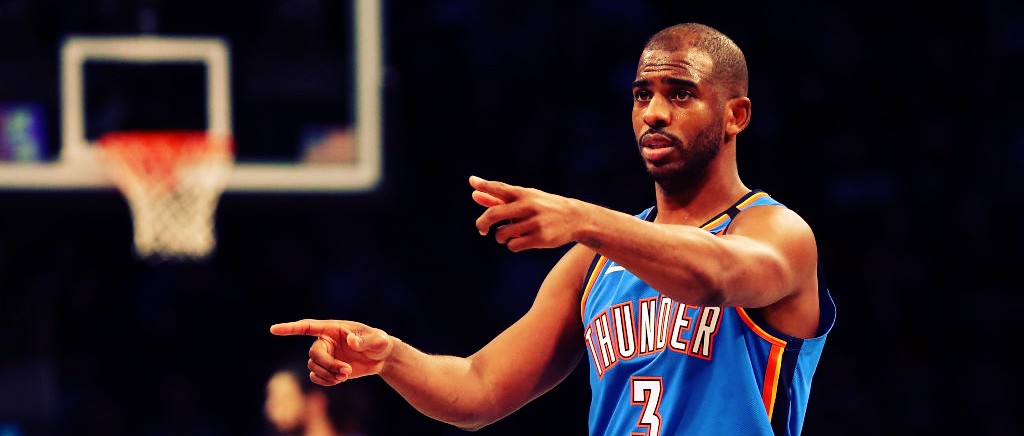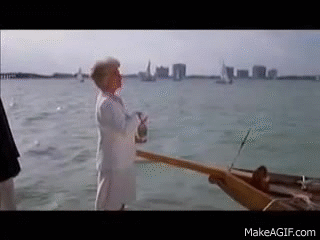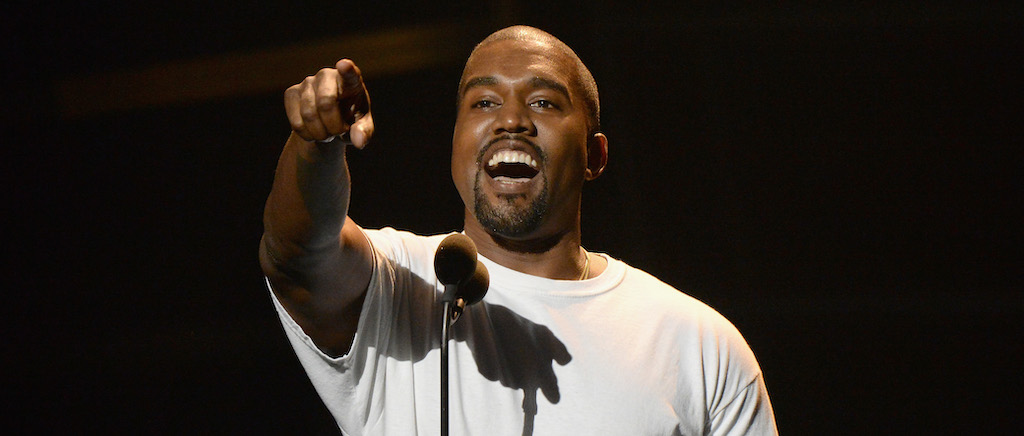
This month, one of the greatest rock albums ever made, Bruce Springsteen‘s Born To Run, turns 45. To celebrate this occasion, I recently asked my editor, “How about I rank my favorite Bruce Springsteen songs?” Unfortunately for both of us, he immediately said “sure!”
If either one of us had thought about this pitch for longer than five seconds, it would have occurred to us that ranking Springsteen’s songs is an invitation to personal misery. Bruce fans are famously fanatical, and will inevitably take issue with anyone’s list. As a Bruce fanatic myself, I was positive that I would hate my own list. The man simply has too many songs that mean a lot to me. How could I possibly arrange them in a satisfying order? I pictured myself at the end of this process, to quote the man himself, wounded but “not even dead.”
Nevertheless, I charged forward. I immediately realized that my original plan to pick 50 songs was woefully inadequate. Bruce recorded 50 songs (many of them great) for just one record, The River. If I was going to do this correctly, I had to “prove it all night,” as it were. I had to play my equivalent of a marathon four-hour concert, which meant writing more than 12,000 words (!) on 100 songs (!!).
Before we get started, a few crucial notes: I own my prejudices. You will notice that some albums are very well represented, and some aren’t mentioned at all. This is a reflection of my preferences, and I’ve tried to be up front about them so you can judge me as you see fit. Also: You will notice that some of my blurbs veer into embarrassingly personal territory, because I believe that to write about Bruce in a way that’s not embarrassingly personal is rock-critic malpractice. If Bruce had the guts to write “just wrap your legs ’round these velvet rims and strap your hands across my engines,” then I can be honest about how Springsteen songs have helped me with my own father issues.
Okay, I think we’re ready. I just want to know: Is there anybody alive out there?
100. “Cadillac Ranch” (Live in Tempe version, 1980)
We have a long road ahead of us so let’s make a quick pitstop for some fuel. This clip is from The River tour, and the specific performance took place the same night Ronald Reagan was elected, a development that would provide the backdrop for many of Springsteen’s greatest songs of the 1980s. But there’s no political subtext to this performance of one of the great “dumb” bar-band rock songs from this era. It’s just pure energy and rock ‘n’ roll joy. Bruce and Clarence mugging for the camera during the outro is a tonic.
99. “Thundercrack” (recorded in 1973, released in 1998)
Years before he was an arena attraction, Springsteen famously cut his teeth in clubs, playing long and winding jam vehicles like this one. He eventually recorded a version for his second album, The Wild, The Innocent And The E Street Shuffle, but putting “Thundercrack” on wax only underscored how the song needed the drama of live performance to truly take flight. Listening to it more than 45 years later, Bruce’s early debt to Van Morrison is obvious, though he would soon learn to imbue the questing quality of Morrison’s soul-jazz excursions into his own unique aesthetic.
98. “Blinded By The Light” (1973)
Springsteen would later reflect on all the “bad verses” he wrote early in his career, when he aped the word-salad imagery of mid-’60s Dylan in songs like the delirious “Blinded By The Light,” the lead-off track from his first album, Greetings From Asbury Park, N.J. In time, the power of Springsteen’s writing would derive from its austerity and impeccably chosen narrative details. “Blinded By The Light” in contrast is all stream-of-consciousness nonsense: “Madman drummers bummers and Indians in the summer with a teenage diplomat / In the dumps with the mumps as the adolescent pumps his way into his hat.” But what nonsense!
97. “Drive Fast (The Stuntman)” (2019)
Flash forward from 1973 ahead to Springsteen’s most recent studio album, the sublime Western Stars. His status as rock’s greatest lyrical storyteller remains undiminished on this tale of a down-on-his-luck Hollywood journeyman. (The album predated Once Upon A Time In Hollywood by one month, and this song very much feels like a companion to Quentin Tarantino’s film.) From the jump, Springsteen implants a movie in your head: “I got two pins in my ankle and a busted collarbone / A steel rod in my leg, but it walks me home / At nine, I climbed high into the boughs of our neighborhood’s tallest tree / I don’t remember the fear, just the breeze.” Like that, he’s created another character you feel you’ve known for years.
96. “The Man Who Got Away” (recorded in 1979, released in 2015)
Every Springsteen fan has a long list of outtakes that they will insist should have been a proper album. (Only Bob Dylan has a larger and more essential vault of orphaned tracks.) For me, “The Man Who Got Away” is the scorching rocker that got away from The River, an album over-loaded with consciously silly three-chord bangers. (Springsteen has said that he imagined his characters from songs like “The River” and “Independence Day” going to bars and hearing a band play tunes such as “Crush On You” and “You Can Look (But You Better Not Touch)”). While “The Man Who Got Away” definitely rips, the lyrics point to the troubled sociopaths that populate his next LP, Nebraska, spinning the tale of a man who can’t tell the difference between the action film he sees in a theater and real life.
95. “Cindy” (recorded in 1979, released in 2015)
Here’s another sublime number that didn’t make The River. A strikingly spare love song that evokes Buddy Holly’s “Everyday” and somehow predicts the distinctive chiming strum of The Smiths, “Cindy” was originally slotted for the single-disc version of The River, but Bruce apparently demurred and left it in the vault for another 36 years. Had he put it on The River, Bruce might have been credited with helping to define the burgeoning sound of ’80s college rock.
94. “The Klansman” (recorded in 1983, unreleased)
And then there are wonderful Boss tunes that have never even been released. One of my favorites is this disquieting first-person song about a racist who dreams of raising his son in the KKK. “The Klansman” came out of the period when Bruce was immersing himself in home recording, which produced Nebraska and the demos that became Born In The U.S.A. “The Klansman” is a fascinating snapshot of Springsteen working in the space between those two classics, exploring the dark underbelly of America while tinkering with drum machines and synths. (It sounds a lot like The War On Drugs.)
93. “American Skin (41 Shots)” (Live In New York City version, 1999)
Springsteen’s political songs, from “Born In The U.S.A.” on down, have long been either misinterpreted or decontextualized of their lyrical messages by his core boomer fanbase. But “American Skin (41 Shots),” a searing protest song against police violence inspired by the shooting death of Amadou Diallo at the hands of the NYPD, is so direct that there was no missing the point. “You can get killed just for living in your American skin,” Springsteen sings mournfully as the song builds from a whisper to a scream. The head of New York’s State Fraternal Order of Police, Bob Lucente, subsequently called Springsteen a “dirtbag” and a “floating f**.” In retrospect, it’s pretty clear who the dirtbag is.
92. “Magic” (2007)
Springsteen’s protest numbers generally became more obvious in the 21st century, which made them easier to understand as polemics even as this obviousness diminished them artistically. The title track from his best album of this period is a notable exception. Over a simple folk melody, Springsteen tells a parable about an illusionist whose entertaining diversions conceal terrifying truths: “On the road the sun is sinkin’ low / Bodies hanging in the trees / This is what will be.” In 2007, the connection to the Bush administration was clear, though the song remains relevant to all American leaders.
91. “Cautious Man” (1987)
As an artist, Springsteen is a cautious man, re-writing lyrics over and over until they’re perfect, and then shelving the song altogether along with dozens of others when they don’t suit his overall vision of an album. As a songwriter, he’s often written about the dread underpinning that wariness, driven by an existential fear about how losing what you have is an incontrovertible fact of life. “Cautious Man,” a highlight of one of his greatest albums, Tunnel Of Love, is a thinly veiled autobiography about a character named Bill Horton whose paranoia about losing his wife drives him to maddening restlessness.
90. “The Rising” (2002)
The Rising was a capstone on Springsteen’s triumphant return to the center of pop culture, a process that began three years earlier when he reunited with The E Street Band and launch a hugely successful multi-year tour. Arriving in the wake of Sept. 11, The Rising took on outsized importance in the lives of millions of people, delivering the same solace that Springsteen’s classic albums provided in the ’70s and ’80s. Personally, however, I’ve never been a fan of this album, and I’d argue that removed from the urgency of the post-9/11 landscape, the clunky production and heavy-handed songs haven’t aged terribly well. But not even a skeptic of The Rising can deny the rousing title track, especially after hearing it live. Even if this song feels a little like Springsteen-by-numbers (sorry, the skeptic in me dies hard!) I can’t help but chant “li li li li” after the first chorus.
89. “Ramrod” (1980)
Some Springsteen songs are intended to address the worst calamities weighing down the American psyche. And some Springsteen songs about simply about a dude hitting on a woman by conflating driving a car with sex. “Ramrod” is the latter.
88. “Roulette” (recorded in 1979, released in 1998)
If this isn’t the fastest song in the Springsteen canon, it’s definitely the most frenzied. Supposedly the first song put to tape for The River, “Roulette” was written and recorded in reaction to the Three Mile Island accident, a significant radiation leak that occurred at a nuclear power plant in Pennsylvania. Bruce sounds like he’s spitting out every last word right before the world ends, as Max Weinberg pounds out a furious “Wipe Out”-esque drum pattern. Springsteen later admitted that “Roulette” should have made The River, though it’s possible that even a double-record couldn’t have contained a track this wild.
87. “Restless Nights” (recorded in 1980, released in 1998)
Yet another great song recorded for but ultimately left off of The River. A perfect little power-pop number inspired by The Raspberries, “Restless Nights” plays like an amalgam of the romantic oldies radio sound of Born To Run and the stark adult disillusionment narratives of Darkness On The Edge Of Town. “Once I held you in my arms / On a bed of stone,” Bruce sings. “Now we have grown.”
86. “Bring On The Night” (recorded in 1979, released in 1998)
I mean … The River should have just been a triple album.
85. “Western Stars” (2019)
The title track from the most recent Springsteen studio LP was his finest song in many years, depicting an aging B-movie actor standing at a lonely crossroads. Leaning into his most cinematic tendencies, he patiently lets the story unfold like an affecting ’70s character study, even as he finesses some dazzling narrative details: “Here in the canyons above Sunset, the desert don’t give up the fight / A coyote with someone’s Chihuahua in its teeth skitters ’cross my veranda in the night / Some lost sheep from Oklahoma sips her Mojito down at the Whiskey Bar / Smiles and says she thinks she remembers me from that commercial with the credit card.”
84. “It’s Hard To Be A Saint In The City” (1973)
Springsteen agnostics will surely scoff at the purple prose of this early gem. “I had skin like leather and the diamond-hard look of a cobra / I was born blue and weathered but I burst just like a supernova / I could walk like Brando right into the sun / Dance just like a Casanova.” To be sure, it’s hard to distinguish this song from the gloriously overripe mini operas of Meat Loaf’s Bat Out Of Hell. But Springsteen wrote with so much flair that it’s really hard to resist. When David Bowie covered it later on in ’73, he revealed the glam rock at this delightfully hammy song’s core.
83. “My Beautiful Reward” (1992)
The old cliché about personal happiness being bad for art is insulting to the people who make art. And yet, with Bruce Springsteen in the early ’90s, it seemed to ring somewhat true, as his period of settling down and starting a family coincided with one of the worst albums of his career, 1992’s Human Touch. The other album he released that year, however, Lucky Town, is his most underrated work, boasting several insightful songs inspired by his maturing, contented outlook. Unlike the questing songs he wrote as a younger man, the gorgeous “My Beautiful Reward” is imbued with the self-assurance of a man who has finally found what he’s looking for.
82. “Highway 29” (1995)
Commercially speaking, Springsteen’s career reached a low ebb with The Ghost Of Tom Joad, a muted and exceedingly dense set of story songs set in the American West that couldn’t have been farther removed from the nu-metal and teen pop acts of the mid-’90s. Even now, it remains his most difficult record, due to nearly nonexistent musical arrangements that put the focus almost entirely on Springsteen’s lyrics. But patient listeners of Tom Joad will be rewarded with some of the richest narrative songwriting of Springsteen’s career, including the song “Highway 29,” about a shoe salesman who meets a femme fatale and ends up robbing banks.
81. “Sherry Darling” (1980)
Not necessarily a great song per se, but it is definitely an extremely fun-sounding party. This is also one of Bruce’s funniest songs, a positively riotous portrait of low-rent scumbags: “Your mama’s yappin’ in the back seat / Tell her to push over and move them big feet / Every Monday morning I gotta drive her down to the unemployment agency.”
80. “Iceman” (recorded in 1977, released in 1998)
The shift Springsteen took between the operatic Born To Run and the mean leanness of Darkness On The Edge Of Town is one of the most dramatic of his career. But digging into the dozens of outtakes from that period reveals a more gradual evolution. Take “Iceman,” a moody piano ballad that resembles the grand rockers of Born To Run after a night of heavy drinking. “Once they tried to steal my heart, beat it right out of my head / But baby they didn’t know that I was born dead / I am the iceman, fighting for the right to live.” While the Darkness sentiment is there, the language was a bit too flowery to slot next to the stark likes of “Badlands” and “Adam Raised A Cain.” Still, an amazing song nonetheless.
79. “Wages Of Sin” (recorded in 1982, released in 1998)
Another great moody ballad stuck between albums. In the early ’80s, Springsteen got sidetracked with Nebraska while writing and recording the songs that would become Born In The U.S.A. “Wages Of Sin” came out of the same sessions that produced “Born In The U.S.A.,” “I’m On Fire,” “Downbound Train,” and other cornerstones of the future blockbuster. “Wages Of Sin” feels like it belongs in the Nebraska camp, though Springsteen gave it an arrangement that put it in the same ballpark as “My Hometown.” Ultimately, however, Springsteen had brilliant brooders to burn at this time, and “Wages Of Sin” fell by the wayside until the release of the box set Tracks.
78. “Human Touch” (1992)
Released right as alternative music was subsuming rock culture, Springsteen’s ninth studio LP Human Touch instantly felt out of step with the times when it came out in the spring of ’92. In contrast with its companion album, the quickly recorded and gritty Lucky Town, Human Touch sounds like a bloated stadium-rock release from a bygone era, marred by garish arrangements and the most generic songwriting of Springsteen’s career. That is, except for the title track, an aspirational rocker deeply influenced by Bruce’s experiences with therapy: “You can’t shut off the risk and pain / Without losin’ the love that remains” While Human Touch on the whole is awkward, the title song remains a moving gesture toward improving mental health.
77. “Secret Garden” (1995)
Springsteen’s decision to record some new songs with The E Street Band for his mid-’90s Greatest Hits album seemed inevitable given the hit that his stature and popularity took earlier in the decade. But “Secret Garden” is hardly the barnstorming return-to-form that fans might have expected. If anything, it feels like a return to his Tunnel Of Love period, with swirling keyboards and Clarence Clemons’ somber sax wails scoring Springsteen’s soft-spoken lyrics about trying to achieve a romantic and spiritual connection.
76. “Man At The Top” (recorded in 1983, released 1998)
This country-ish outtake from the Born In The U.S.A. sessions feels a little like Bruce doing meta-commentary on his impending superstardom: “Man at the top says it’s lonely up there / If it is, man, I don’t care / From the big white house to the parking lot / Everybody wants to be the man at the top.” He only performed it twice on that album’s tour, though E Street Band member Nils Lofgren has adopted it and played it numerous times on his own tours, calling it one of his favorite Springsteen songs.
75. “Straight Time” (King’s Hall, Belfast, March 19, 1996 version, 2017)
I didn’t really connect with the songs from The Ghost Of Tom Joad until I heard the Nugs.net release of Bruce’s concert in Belfast on the Tom Joad tour. On record, the performances are subdued to the point of dulling the impact of the songs, with Springsteen murmuring his wordy lyrics over threadbare instrumentation. Live, however, he put a little extra muscle into his delivery, which really brings songs like “Straight Time” to life. Here, you can really appreciate the narrative power of this song about a parolee who tries to settle down but feels the insistent pull of the criminal life.
74. “Your Own Worst Enemy” (2007)
Magic is the best Springsteen album of the 21st century — it is his most consistently great set of songs, and it’s the only Bruce album of the last two decades that felt like it was part of what was going on in contemporary rock at the time. The album’s release coincided with Springsteen coming back in vogue with a new generation of indie artists, and “Your Own Worst Enemy” is among the tracks that suggests that Bruce was paying just as much attention to indie rock at the time. The Magnetic Fields were frequently cited in comparison to this song, with some eagle-eared listeners comparing it to “Born On A Train.” We all know how much Bruce loves “born” songs, after all.
73. “Devil’s Arcade” (2007)
If “Your Own Worst Enemy” is a Magnetic Fields homage, this song feels like a nod to Arcade Fire’s deeply Bruce-indebted second album Neon Bible, which dropped six months before Magic. The whisper-to-a-scream synth rock of course recalls Springsteen’s own past, but the souped-up strings section that lifts “Devil’s Arcade” to the heights of melodrama shows that the Boss could still pull off this formula as well as any of the youngsters nipping at his heels.
72. “Point Blank” (1980)
While this dramatic ballad, centered on Roy Bittan’s theatrical piano playing, appeared on The River, it feels spiritually connected to Springsteen’s previous album, Darkness On The Edge Of Town. (Springsteen actually wrote it in 1978, soon after he completed that record.) Like the songs from Darkness, “Point Blank” seems like a deliberate attempt to tamp down the romanticism of Bruce’s big breakthrough, Born To Run, particularly the lyric in which Springsteen likens the central couple to Romeo and Juliet, and then adds: “These days you don’t wait on Romeo’s / You wait on that welfare check.” If not for the beauty of Bittan’s playing, “Point Blank” would be the most unbearably grim song in the Springsteen catalogue. As it is, it still feels like a shotgun blast to the gut.
71. “Youngstown” (Live In New York City version, 1999)
Another excellent song from The Ghost Of Tom Joad that blossomed live in concert. In this case, Bruce gives it the “Electric Nebraska” treatment, exploding this panoramic tale of a small mining town falling into financial ruin into a scathing arena-rock song. While the lyrics eloquently detail the history of the town, from boom times to massive layoffs, the live version’s emotional peak is Nils Lofgren’s long, screaming guitar solo, which provides the catharsis lacking in the studio version.
70. “I Wanna Be With You” (recorded in 1979, released in 1998)
One of my favorite goofy moments in any Springsteen song occurs in this outtake from The River, which ranks among his greatest pure rockers. For two minutes and 26 seconds, Bruce has been making his case to a glorious Madonna that he really, really wanna be with you. It’s all he can think about. He even lost his job at the Texaco station because instead of pumping gas he’s dreaming of this woman. And then, at the 2:26, his voice cracks: “I just don’t UNDERSTAND IT! YOU’RE NOT PRETTY AT ALL!” The song should just end right there, as he’s obviously blown it.
69. “Light Of Day” (MTV Plugged version, 1992)
MTV Plugged was a big deal for me as a teenaged Springsteen fan, in part because I had to hide my obsession with it from my grunge and punk-loving friends, who all thought that Bruce was hopelessly lame in the early ’90s. As a Bruce loyalist since I procured by first Springsteen tape, Born In The U.S.A., at age 7, I kept my mouth shut as my pals mocked the Boss each time the commercials aired for MTV Plugged. Meanwhile, I taped the special on my VCR and watched it repeatedly, particularly the performance of “Light Of Day,” a song that Bruce wrote for a largely forgotten 1987 Paul Schrader film. (Joan Jett and Michael J. Fox sing it in the movie.) In Bruce’s hands, “Light Of Day” is all show-stopping flash — he solos, he preaches, he burns the house down.
68. “No Surrender” (1984)
Bruce apparently had some misgivings about putting this uplifting anthem on Born In The U.S.A., fearing that the song’s guileless celebration of friendship and rebellion — “We learned more from a three-minute record baby that we ever learned in school” — was “too glib.” Steven Van Zandt persuaded him at the last second to include it on the album after all, and it wound up as a kind of sister song to a song written about Van Zandt, “Bobby Jean.” (More on that later.)
67. “Murder Incorporated” (1995)
This song left off of Born In The U.S.A. remained unreleased until it was re-recorded for his Greatest Hits album. A story about a guy on the run for the mob whose paranoia causes him to see threats around every corner, “Murder Incorporated” actually felt well-timed when it finally came out in the mid-’90s, a period when Bruce was otherwise sticking to synth-driven ballads and acoustic folk dirges. Here was a song that showed Bruce could actually, you know, rock.
66. “Cynthia” (recorded in 1983, released in 1998)
As Springsteen has fallen in and out of fashion over the years — though he seems to have permanently stayed in for many years now — different eras of his career have also risen and fallen in esteem. For many years, his synth-y rockers from the mid and late ’80s were dismissed as dated fluff. But that period has proven to be among his most influential on subsequent generations, which recontextualizes an outtake like “Cynthia” as a lost classic. Recorded for Born In The U.S.A., the song is yet another tribute to a fetching woman that skillfully mixes Springsteen’s Fender Stratocaster with Roy Bittan splashy keyboards, a perfect realization of the heartland rock sound that bands like The War On Drugs and The Killers would ape decades later.
65. “The Wish” (recorded in 1987, released in 1998)
Springsteen has written scores of songs about his father, many of them bitter. But this outtake from Tunnel Of Love written for his mother Adele is one of the sweetest and most open-hearted songs in his entire catalogue. An unabashedly sentimental tribute to a beloved parent, “The Wish” reads as undisguised autobiography: “If pa’s eyes were windows into a world so deadly and true / You couldn’t stop me from looking but you kept me from crawling through / And it’s a funny old world, mama, where a little boy’s wishes come true / Well I got a few left in my pocket and a special one just for you.” Bruce later brought this song back to great effect in Springsteen On Broadway.
64. “New York City Serenade” (1973)
Bruce at his most Astral Weeks. By his next album, Born To Run, he would be steered away from these long, exploratory songs by new producer and manager Jon Landau, and ultimately embrace a more economical type of songwriting. However, I do wonder about the Bruce in a different timeline who allowed himself to drift even deeper into the mystic.
63. “Wreck On The Highway” (1980)
When Bruce played The River in its entirety on his 2016 tour, it was always an odd sensation when the main set ended with this bleak and haunted little song, about a guy who witnesses a fatal car accident and is sent spiraling on an existential crisis. It’s hardly the type of tune that you expect to hear with 20,000 other people. “Wreck On The Highway” was made for headphones, preferably while tucked under covers in the midst of a major anxiety attack.
62. “Valentine’s Day” (1987)
One of the most disturbing Springsteen songs, “Valentine’s Day” is a spiritual sequel to “Wreck On The Highway,” depicting a similar scenario in which a guy frets about losing a relationship he’s too unsettled to ever feel truly comfortable in. Unlike “Wreck On The Highway,” however, the paranoia of “Valentine’s Day” feels justified — especially since it comes at the end of Bruce’s most heartsick LP, Tunnel Of Love — giving it a nightmarish vibe: “They say if you die in your dreams you really die in your bed / But honey last night I dreamed my eyes rolled straight back in my head.”
61. “All That Heaven Will Allow” (1987)
This jaunty pop song is one of the few rays of light on Tunnel Of Love. In the context of the album, it feels like a flashback to a simpler time, when the protagonist has less complicated feelings about love and is filled with the romantic possibilities of marriage: “Rain and storm and dark skies / Well now they don’t mean a thing / If you got a girl that loves you / And who wants to wear your ring.” On its own, “All That Heaven Will Allow” is one of Springsteen’s loveliest and most straightforward love songs. But when heard next to the most heartbreaking songs on Tunnel Of Love, it’s almost unbearably poignant.
60. “Rockaway The Days” (recorded in 1983, released in 1998)
Springsteen has so many outtakes that Bruce nerds have long assembled alternate track lists for albums, or imagined entirely new LPs made up of discarded tracks. I recently made a playlist that invented a fictional country rock album that Bruce could’ve put out in 1987. (The idea is that Bruce hears Steve Earle’s Springsteen-inspired Guitar Town and decides to out-Bruce the Bruce acolytes.) This laid-back story song recorded during the Born In The U.S.A. sessions is one of the cornerstones of this imaginary LP, featuring Springsteen’s easygoing strum playing off Bittan’s sparkling piano and Danny Federici’s warm organ fills on a tale about an ex-con who stumbles into a fateful confrontation at a bar.
59. “Tenth Avenue Freeze-Out” (1975)
There’s no question that Bruce Springsteen is a solo artist when it comes to the writing and arranging of his songs. But as an idea, Springsteen is intimately associated with his long-time backing band, The E Street Band. In later years, after Bruce spent more than a decade separated from his compatriots, he came to conceive of his supporting musicians as a bridge between himself and his audience, a living manifestation of the characters and community that he wrote about. “Tenth Avenue Freeze-Out” is a critical part of the E Street mythology, detailing the group’s creation. (The title is a bit of a red herring — Springsteen himself has said he doesn’t know what a “Tenth Avenue Freeze-Out” is. Perhaps Tenth Avenue is a road that bisects E Street?) This song also played a role in forming the classic lineup of the band: Little Steven Van Zandt stopped by the studio to help his friend Bruce with the horn arrangement and wound up sticking around.
58. “Night” (1975)
An early example of a song that would become a Springsteen staple in the late ’70s and early ’80s: The “you work like a dog and now it’s time get drunk” song. The greatness of “Night” is that more than the lyrics, it makes you feel the rush of punching out of work and heading out into the darkness in search for fun and adventure.
57. “If I Should Fall Behind” (1992)
Few songwriters as successful as Springsteen have gotten so far while writing so few unabashed love songs. When Bruce addresses romance and relationships, he is often ambivalent, if not downright skeptical, about the possibilities for men and women to achieve parity and genuine understanding. Which is what makes this hushed ballad from Lucky Town all the more affecting. The closest Springsteen has come to writing to a wedding song, “If I Should Fall Behind” is a simple statement of the commitment and trust at the core of any successful marriage: “I’ll wait for you, should I fall behind, wait for me.”
56. “Loose End” (recorded in 1979, released in 1998)
Now here’s a more typical Springsteen song about a love affair, in which a failing relationship is likened to a hangman’s noose. Like “Cindy” and “Be True,” this song was included on the original one disc version of The River (titled The Ties That Bind) but subsequently dropped from the final double-album. Little Steven has been a vocal booster of “Loose End” over the years, and the song has frequently popped up in setlists. (Though there’s confusion over whether it’s called “Loose End” or “Loose Ends” — I’m sticking with the track listing on Tracks and The Ties That Bind boxed set.)
55. “Out In The Street” (1980)
Here’s another “you work like a dog and now it’s time get drunk” song, styled after the oldies station standard “Friday On My Mind” by the Easybeats. This song typifies the garage-rock glory of The E Street Band during The River era, though this song’s live-in-the-studio looseness belies the labor that went into it. According to Brian Hiatt’s Bruce Springsteen: The Stories Behind The Songs, “Out In The Street” required between 30 and 40 takes, and nearly resulted in the firing of drummer Max Weinberg, who was troubled with timekeeping issues throughout the sessions. And yet the recording itself is pure joy.
54. “I’m Goin’ Down” (1984)
The sixth single from Born In The U.S.A. and somewhat overshadowed by that album’s other monster songs, “I’m Goin’ Down” is one of the least complicated and more light-hearted tunes from the record. Surprisingly, it is also among the most covered songs from Born In The U.S.A. — it hasn’t been played as much as “I’m On Fire,” obviously, but acts ranging from Vampire Weekend to Frank Black to the rapper Dessa to the jam band Trampled By Turtles have performed it over the years.
53. “The Ghost Of Tom Joad” (1995)
When he released The Ghost Of Tom Joad in the mid-’90s, Bruce Springsteen was about as far out of step with the times as he ever would be. A difficult folk record that connected the Dust Bowl imagery of John Steinbeck (by way of John Ford) to the plight of Mexican immigrants and other marginalized people was never going to be an easy sell in the midst of a decade increasingly seduced by brash, escapist music. But heard 25 years later, the title song feels more relevant than ever: “Tom said, ‘Mom, wherever there’s a cop beating a guy / Wherever a hungry newborn baby cries / Where there’s a fight against the blood and hatred in the air / Look for me, Mom, I’ll be there.’”
52. “Kitty’s Back” (1973)
In many ways this show-stopper from The Wild & The Innocent resembles the aforementioned “Thundercrack” — it’s a vehicle made for extended on-stage jams and impressive feats of sweat-drenched energy. On the famous Live At The Roxy bootleg from 1975, “Kitty’s Back” goes on for nearly 19 minutes, with lots of room for soloing by Springsteen, Clemons, and Bittan. “Kitty’s Back” also evokes Van Morrison during his early ’70s It’s Too Late To Stop Now era, as well as some of the biggest jazz-rock bands of the time. (Bruce’s second album dropped four months after Countdown To Ecstasy, and this is as close as he would ever get to Steely Dan.) Again, it’s probably for the best that Bruce moved on from this style. But “Kitty’s Back” remains an incredibly dynamic and fun tune.
51. “Mansion On The Hill” (1982)
The songs on Nebraska were largely inspired by the house in New Jersey where Bruce spent his youngest years, living with his grandparents. Many of the songs are sung from a child’s perspective, including “Mansion On The Hill,” which originated in the late ’70s during Springsteen’s initial rush of interest in classic country music. (The title is lifted from an old Hank Williams tune.) In the song, he describes driving with his father by the rich people’s houses on the edge of town, the sort of class tourism that functions as a metaphor for the insatiable hunger that capitalism instills in the souls of Americans. Somewhere, someone always has more: “In the summer all the lights would shine / There’d be music playing, people laughing all the time / Me and my sister we’d hide out in the tall corn fields / Sit and listen to the mansion on the hill.”
INTERMISSION
Get up, stretch your legs, we have 50 more songs to go.
As a palate cleanser, please enjoy this iconic video of Bruce hijacking “One Headlight” — a huge Springsteen-esque hit from a time in the mid-’90s when Bruce himself wasn’t making hits — from The Wallflowers at the 1997 MTV Video Music Awards.
(I will never get over how Bruce murders the Wallflowers’ guitar player at the end of the song.)
Okay, let’s start the second set.
50. “Candy’s Room” (1978)
One of the sexiest and hardest rocking songs in the Springsteen canon, “Candy’s Room” captures the rush of carnal excitement, with Bruce’s glowering vocal playing off the rapid pattering of Weinberg’s cymbals before bursting into a full-on, heart-exploding gallop. But given that this is a cut from Darkness On The Edge Of Town, no amount of pleasure can be taken at face value, as it’s implied that Candy is a sex worker “with a sadness all her own.”
49. “Lost In The Flood” (1973)
It’s generally believed that Springsteen’s songs didn’t have a political element until the dawn of the Reagan era. But “Lost In The Flood” from Springsteen’s debut Greetings From Asbury Park, N.J. pushes against that narrative. While it’s not an explicit “statement” song, “Lost In The Flood” does connect with the songs that Springsteen would later write about Vietnam veterans cruelly cast adrift after returning home. If anything, the song feels slightly ahead of its time, depicting a protagonist who is moved to violence after struggling to acclimate to peace time, pointing toward films like Taxi Driver and Rolling Thunder that came out later on in the ’70s.
48. “Growin’ Up” (1973)
As exuberant as “Lost In The Flood” is apocalyptic, “Growin’ Up” is straight up self-mythology from Bruce at the start of his career. Over a dreamy piano riff, “Growin’ Up” presents an innocent and utterly guileless Bruce, in which he sings about his childhood fantasies and insists that he hasn’t stopped believing: “I took month-long vacations in the stratosphere and you know it’s really hard to hold your breath / Swear I lost everything I ever loved or feared, I was the cosmic kid in full costume dress / But my feet they finally took root in the earth but I got me a nice little place in the stars / And I swear I found the key to the universe in the engine of an old parked car.”
47. “Two Faces” (1987)
By the time of Tunnel Of Love, Bruce had abandoned such wanton childishness. “Two Faces” forms a trilogy with “Brilliant Disguise” and “One Step Up” at the heart of that record about the duplictiousness of adulthood, and how even in a marriage you can feel completely alone after realizing that the person you love will never truly know you (and you won’t truly know that person). While this is hardly happy-go-lucky material, “Two Faces” and the rest of Tunnel Of Love dazzles because it has some of Springsteen’s greatest and most insightful writing. The candor is gutting, but also educational about the ways of the human heart.
46. “Because The Night” (Live/1975-85 version, 1986)
In the late ’70s, Bruce was willingly giving away hits to other artists, including “Fire” (a hit for The Pointer Sisters) and this sweeping love song that began during the Darkness sessions and was eventually sent to Patti Smith when he couldn’t figure out how to finish the lyrics. The romantic nature of “Because The Night” would have made it a difficult fit on Darkness — it also sounds more like a Born To Run song — but Springsteen also had uncommon courage to forgo the easier path in his career during one of his least certain periods.
45. “Streets Of Philadelphia” (1993)
Springsteen consciously shed the most recognizable aspects of his musical persona in the early ’90s, a process that included ditching the E Street Band and ultimately culminated with “Streets Of Philadelphia,” the Oscar-winning song that was utterly unlike any Springsteen song before it. Singing softly over a musical bed of synthesizers, drum machines, and Ornette Coleman’s sax wails, Springsteen took on the voice of a gay man dying of AIDS, an act that doesn’t seem nearly as subversive now as it did more than 25 years ago. The power of “Streets Of Philadelphia” derives from how Springsteen underplays the material — there is no catharsis or huge emotional breakdowns, just weary resignation in the face of a difficult fate.
44. “Girls In Their Summer Clothes” (2007)
It is de rigueur for classic rockers to ruminate moodily on their own mortality once they reach a certain age. Rarely are these songs as creamy or blissful as “Girls In Their Summer Clothes,” in which Bruce writes about watching young people in their prime of their lives on a lovely warm night from a distant, melancholy perch. Musically, this was his lushest, most pop-friendly production in years, flexing a heretofore hidden predilection for Beach Boys-style harmonics.
43. “Highway Patrolman” (1982)
The cinematic quality of Springsteen’s songwriting has been there from the beginning, but “Highway Patrolman” is the rare instance of a Springsteen song that actually became a movie. Sean Penn adapted it for his 1991 directorial debut, The Indian Runner, and it’s not hard to see why: The story about two brothers, one a local cop and the other the local troublemaker, unfolds as a clear narrative with a neatly defined beginning, middle, and end. Unlike most Springsteen tunes, you can read this one and enjoy it as much as listening. The problem with The Indian Runner is the movie that Springsteen puts in your head is far better than anything Hollywood could ever create from this material.
42. “Rosalita” (Live/1975-85 version, 1986)
I suspect this is one of those songs that people will Control-F and then freak out that it is relatively low on the list. Let me explain: If I were semi-drunken in a stadium right now, “Rosalita” would be a top 10 song for me. Instead, I am stuck behind a keyboard in my office during a pandemic. I’m not really in a “Rosalita” kind of mood at the moment. Therefore, I’m giving this specific version, culled from the ’78 Roxy show, a respectable though admittedly not spectacular spot at No. 42.
41. “Bobby Jean” (1984)
While Springsteen’s songs about marriage and romantic love can be fraught and complicated, his writing about platonic love between men is often pure, sentimental, and idealized. This is yet another attribute that makes his work unique, not just in rock music but the overall culture — expressions of genuine affection between men is either treated as a trigger for defensive gay panic jokes or condescending “bromance” snickers. But in Springsteen songs, these relationships are regarded with the utmost seriousness, which mean when they came to an end, like in “Bobby Jean” — an ode to Steven Van Zandt after he departed the E Street Band — it hits like a small tragedy. “Now we went walking in the rain talking about the pain from the world we hid / Now there ain’t nobody, nowhere nohow gonna ever understand me the way you did.”
40. “Gypsy Biker” (2007)
Another intense song about friendship, though this departure is more permanent. With its powerful folk guitar and expressive harmonica blowing, “Gypsy Biker” is among Bruce’s best topical songs of this period, in large part because he keeps the focus on the human cost of larger cultural forces — in this case war — instead of sloganeering. While a specific conflict is not mentioned, it’s clear Springsteen had Iraq and Afghanistan in mind when he wrote “Gypsy Biker,” which details a group of friends getting stoned and setting their dead friend’s motorcycle on fire. The story is so moving that the anger at the end feels earned and shared by the listener: “To them that threw you away, you ain’t nothin’ but gone.”
39. “Meeting Across The River” (1975)
The most out-of-character track from Born To Run, “Meeting Across The River” is blessed by the fluidly jazzy bass playing of Richard Davis, a critical contributor to one of Bruce’s artistic north stars, Astral Weeks by Van Morrison. The vibe is heavily indebted to film noir, with Bruce detailing a first-person narrative about a loser trying to put together a money-making deal of questionable legality. It’s the one track on the album that could’ve also fit well on Springsteen’s previous LP, The Wild, The Innocent, And The E Street Shuffle.
38. “Stolen Car” (1980)
The full-band version later included on Tracks is well-regarded by Bruce heads, but I still prefer the take originally released on The River. With a sparse arrangement centered on Springsteen’s gently strummed electric guitar and Bittan’s spine-tingling piano licks, “Stolen Car” foreshadows the physical desolation of Nebraska and the romantic dissolution of Tunnel Of Love. The end result resembles a post-punk country weepie.
37. “Johnny 99” (1982)
In his book, Brian Hiatt links this furious Nebraska deep cut with Jimmie Rodgers’ “Ninety-Nine Years Blues,” a folk song cut in 1932 and written by a man serving a life sentence in prison. Springsteen nods to Rodgers with his mad-hatter yodeling throughout “Johnny 99,” banging away on his guitar while dispensing the harrowing story of a stick-up man “with debts no honest man can pay” — a repeat of a line famously used in “Atlantic City” — who asks a judge to be executed because he has even worse thoughts circulating in his head.
36. “Something In The Night” (1978)
As Springsteen evolved into one of the greatest rock songwriters ever, he prided himself on the economy of his well-chosen words. But sometimes Bruce is even more eloquent when he’s simply screaming “whoaaaaaaaa!” One of the finest examples of a mighty “whoaaaaaaaa!” comes at the start and conclusion of “Something In The Night,” in which a depressed protagonist complains that “you’re born with nothing and better off that way.” Ultimately, his problem is existential — depression surrounds him and constantly goes “running around my head,” but he can’t pinpoint the precise cause. It’s exactly the kind of song that requires an inarticulate expression, because he’s describing a feeling that can’t ever be fully understood or reconciled. In other words, an ideal vehicle for that gutwrenching “whoaaaaaaaa!”
35. “Spirit In The Night” (Hammersmith Odeon, London ’75 version, 2006)
Bruce’s finest Van Morrison impersonation. The studio version from Greetings From Asbury Park, N.J. is notable for marking Clarence Clemons’ entree into Springsteen’s recorded work, though that take otherwise sounds a little stiff. (Bruce played most of the instruments himself on that cut.) “Spirit In The Night” really comes to life on the stage, often positioned relatively early in the set. Back in the old days, Bruce and Clarence would typically wander into the audience as the song rose and fell along various dynamic peaks. “Spirit In The Night” remains a festive invitation to venture out to Greasy Lake and get lost in the slipstream.
34. “The Ties That Bind” (1980)
A critical song from The River period, “The Ties That Bind” is a work of aspirational imagination, an ode to the power of community written by a guy who at the time was a proud bachelor and defiant loner. Though the song didn’t start out that way — an early version recorded during a soundcheck in 1978 has different music and skeletal lyrics that valorize the “lone wolf” lifestyle. On The River, Springsteen empathized with the grounded family men that lived a life very different from his own, and “The Ties That Bind” became the tone-setter for his meditations on these themes.
33. “I’m On Fire” (1984)
The go-to Springsteen song for indie-rockers to cover, perhaps because it’s not as “hot” as so many Springsteen songs. (I refer to Bruce’s delivery — in terms of content, this is Springsteen’s most overtly sexual song.) While self-conscious underground musicians struggle with stadium-rock bombast, “I’m On Fire” is low-key and sounds like it could’ve been made by a home-bound self-styled bedroom-pop auteur. Though when Bruce made it for Born In The U.S.A., you could tell that he had Elvis on the brain.
32. “4th of July, Asbury Park (Sandy)” (1973)
If I made this list in the winter, this song would probably be 20 spots lower. But it’s the summer, and this is one of his defining summer songs, so it comes in at No. 32.
31. “Tunnel Of Love” (1987)
One of Springsteen’s most elaborate pop productions, “Tunnel Of Love” is a Trojan horse, a whirlwind of carnivalesque keyboards, programmed beats, screaming guitars, funereal synths, and Patti Scialfa’s soaring vocals that conceal an incisive Springsteen lyric about the dark side of marriage. In that way, this song musically signifies the central lyrical metaphor about a long-term relationship being an amusement park ride — there are ups and downs, your perception is altered, and in the end “it’s easy for two people to lose each other.” Like so much of Tunnel Of Love, detractors shrugged off the title track as “dated” after production styles for rock albums turned grittier in the ’90s. But as those synth tones and gated drum sounds came back in fashion in pop and indie music in the past decade, “Tunnel Of Love” now rightfully stands as one of Bruce’s most sonically adventurous and lyrical evocative works.
30. “The Promised Land” (1978)
Amid the bleakness of Darkness On The Edge Of Town, “The Promised Land” provides necessary uplift as a statement of purpose about holding on to your integrity and, yes, sense of hope even when faced with incredible hardship. The title evokes both Biblical prophecy about a home for true believers, and the ambivalent patriotism of Chuck Berry’s own “Promised Land,” in which “a poor boy” leaves his southern home in search of a better life in California. In Springsteen’s song, which was similarly inspired by a road trip through the American West, the protagonist chooses to steer into a great storm in order to purify himself and, perhaps, his country: “Blow away the dreams that tear you apart / Blow away the dreams that break your heart / Blow away the lies that leave you nothing but lost and brokenhearted.”
29. “Adam Raised A Cain” (1978)
Do you get along with your father? If you do, feel free to move on to No. 28. If you don’t, join me in marinating in the angriest song ever written by a son to his father. In the excellent documentary The Promise: The Making Of Darkness On The Edge Of Town, engineer Chuck Plotkin recalls Springsteen describing this song as “a dead body” in a movie that is introduced via a shock jump cut. Bruce certainly plays “Adam Raised A Cain” like a man in the process of committing a murder, cutting loose one of his greatest on-record guitar solos before positively screaming the final verse, which includes one of his most despairing lyrics: “Your born into this life paying / for the sins of somebody else’s past.”
28. “Used Cars” (1982)
A critical moment in any young person’s life is when you first realize that your parents are flawed human beings who might even seem pathetic to other adults. Springsteen writes about his own revelation in that regard in “Used Cars,” which extends an empathy for his father that “Adam Raised A Cain” violently refuses. In the song, he describes a smarmy car salesman who talks down to his working class father: “Now my ma she fingers her wedding band / And watches the salesman stare at my old man’s hands / He’s telling us all about the break he’d give us if he could, but he just can’t / Well if I could I swear I know just what I’d do.” In the handwritten notes about Nebraska included in his book Songs, Springsteen calls this track “the exciting story of my own personal life.”
27. “My Love Will Not Let You Down” (recorded in 1982, released in 1998)
Springsteen recorded many remarkable songs in the early ’80s as he was putting together two very different masterpieces, Nebraska and Born In The U.S.A., but this earnest pledge ranks among the very best to somehow not make either record. Though in the end, that might have been for the best: “My Love Will Not Let You Down” positively leapt out of the essential outtakes boxed set Tracks, and it went on to become a central song of the reunion tours that Bruce played with The E Street Band for the next few years.
26. “Downbound Train” (1984)
The perfect melding of Bruce’s Nebraska and Born In The U.S.A. sides. The narrative is impressively clear and economical: A guy has a job and a girl, he loses the job then the girl, and he has a mental breakdown. It slots cleanly between “Johnny 99” and “Highway Patrolman,” though it’s actually sadder than either. Musically, “Downbound Train” crisply mixes Springsteen’s Fender guitar and Roy Bittan’s synths in a manner that dozens of rock bands are still trying to emulate decades later. It peaks with a harrowing bridge: “The room was dark, our bed was empty / Then I heard that long whistle whine / And I dropped to my knees, hung my head and cried.” Incredibly, this was one of the few tracks not released as a single from Born In The U.S.A., though it stands now as one of the greatest heartland rock songs of the ’80s.
24. “State Trooper” (1982)
If Springsteen is the writer and director of the imaginary movies that exist in his songs, then he’s also his own leading man, embodying the lyrics and playacting his characters. In that regard, “State Trooper” stands as one of his greatest “acting” performances. In this song, the narrative details are sparse — we know there’s a guy behind the wheel, and he seems a little crazy, and he’s teetering on the brink of violence. But what stands out more than the words is the intensity of Springsteen’s delivery. He’s in full-on Travis Bickle mode, staring at himself in the rearview mirror, and daring an unseen adversary to challenge him. It’s a wholly convincing and deeply unsettling act of evil transfiguration that lasts for three minutes and 11 seconds.
24. “One Step Up” (1987)
This is the single most heartbreaking Springsteen song for me. On side two of Tunnel Of Love, Springsteen crafted a suite of songs about good people who lose their way in spite of their best intentions. “One Step Up” is about the moment of surrender to to the void, when a man in an unhappy relationship makes the fateful decision to drift. Every step of the way, he doesn’t delude himself about the choices he’s made: “When I look at myself I don’t see / the man I wanted to be.” At the time, Springsteen didn’t necessarily think he was writing about himself; his own marriage was still intact when he made Tunnel Of Love. But “One Step Up” feels like a confession sent from his subconscious. In the haunting coda, he moans softly with Patti Scialfa, the woman who would eventually become his second wife.
23. “The Promise” (1977/2/7 Albany, New York version, 2017)
Actually, maybe this is the single most heartbreaking Springsteen song. It’s Bruce at his most meta — he wrote it as a sequel to “Thunder Road,” and it’s about the people who loved that song, took some solace and hope from it, and then proceeded to be crushed by their failure to become the dreamers from “Thunder Road” in real life. Written during the Darkness era, it’s one of the most notorious tracks to not make a Springsteen album, though the song’s musical and thematic similarity to “Racing In The Street” likely made it a no-go for that LP. It’s also true that he could never quite nail it in the studio — neither the full-band version later included on The Promise or the solo piano rendition recorded for 18 Tracks fully capture the song’s profound pathos. For me, “The Promise” didn’t truly blossom until I heard this live version, in which the echoing, dead-silent environs of Albany’s Palace Theatre make Bruce sound as alone as “The Promise” demands.
22. “Born In The U.S.A.” (1984)
It’s a shame that this song is almost entirely defined against the misinterpretations of political opportunists and, well, dumb people who don’t pay attention to lyrics. Even in 2020, conservative websites are still discovering that “Born In The U.S.A.” is a critique of contemporary America. How could anyone mistake these words for simple-minded jingoism: “Born down in a dead man’s town / The first kick I took was when I hit the ground / You end up like a dog that’s been beat too much / ‘Til you spend half your life just covering up.”
21. “My Hometown” (1984)
When I was lucky enough to see Springsteen On Broadway in 2017, this song absolutely wrecked me. Bruce played it at the piano, and he sang it like you were sitting in his living room. I hadn’t anticipated how the sound of his un-amplified voice — I had only ever seen him in arenas and stadiums with the full-throttle backing of the E Street Band — would affect me. But for the first time Bruce on stage seemed … vulnerable, like he was a beloved member of your family who was now older and more wistful. And then there was the song itself, which depicts a small town as a hive of prejudice and repression, and also as a physical manifestation of your inner emotional terrain. A place you yearn to leave, and an inextricable part of your soul. I almost included that version here, but as a recording, the original Born In The U.S.A. cut remains one of his prettiest and most heartfelt moments.
20. “Incident On 57th Street” (1973)
This song defines the line between Springsteen fanatics and Springsteen agnostics. For the latter group, I can imagine that this update of Romeo and Juliet featuring characters named Puerto Rican Jane and Spanish Johnny is pure cornball stuff. Sure, it’s not subtle. It is unabashedly theatrical and shamelessly romantic. The prose isn’t merely purple, it’s mauve. I get it. This stuff isn’t for everybody. If, however, you belong in the former group, please join me: We may walk until the morning light, baaaaaaaaaaaaby!
19. “She The One” (Hammersmith Odeon, London ’75 version, 2006)
If I had to play a single track that demonstrates the power and excitement of the heart-stopping, pants-dropping, hard-rocking, booty-shaking, love-making, earth-quaking, Viagra-taking, justifying, death-defying, legendary E Street Band, this is where I would start.
18. “Two Hearts” (1980)
On record, “Two Hearts” presents Bruce and the E Street Band at their most purely thrilling as a straight-forward rock ‘n’ roll bar band. But I personally treasure “Two Hearts” as the defining “Bruce and Little Steven share a microphone and in the process symbolize the power of friendship” song. This gesture adds another layer to the lyrics, which are about moving beyond childhood pals in order to find your life partner as an adult: “Once I spent my time playing tough guy scenes / But I was living in a world of childish dreams / Someday these childish dreams must end / To become a man and grow up to dream again.” Knowing that you still have your wingman looking out for you even as you enter the adult world is the mark of a true blood brother.
17. “Nebraska” (1982)
As he does in “State Trooper,” Springsteen slips into the role of a cold-blooded killer in “Nebraska,” though this guy at least has the intellectual fortitude to quote Flannery O’Connor. The lyrical allusions to Terrence Malick’s Badlands are well documented, but the emotional flavor of this song — and the reason why the Nebraska album resonates with people who aren’t mass murderers — is rooted in Springsteen’s own loneliness. The numbness of his vocal, and the stomach-churning harmonica wails that punctuate the verses, ultimately connect to a greater spiritual desolation that was pervasive in Reagan’s America, and each version of America that’s come after.
16. “Dancing In The Dark” (1984)
I’m not going to talk about how this was written at the last second because Jon Landau wanted another hit for Born In The U.S.A., or the fact that it is still the highest charting hit of Bruce’s career, or the video with Courteney Cox, or any of that other obvious stuff. Instead, let’s just enjoy watching Ryan Gosling, Ben Mendelsohn, and a dog dancing to “Dancing In The Dark” in The Place Beyond The Pines.
15. “Hungry Heart” (1980)
Unreliable narrators abound in Springsteen songs, but the guy in “Hungry Heart” stands out because he’s so damn charming. Set to one of his purest and poppiest melodies — after giving away hits on Darkness, Bruce decided to chase them for The River — “Hungry Heart” promises to be yet another Springsteen tune in which a lovable small-town loser tries to make something of himself. But like he does in “Born In The U.S.A.,” Springsteen tells you immediately that the music does not accurately reflect the tenor of the lyrics: “Got a wife and kids in Baltimore, Jack / I went out for a ride and I never went back / Like a river that don’t know where it’s flowing / I took a wrong turn and I just kept going.” Instead of writing another questing song about the allure of the open road, Springsteen instead takes a surprise turn toward addressing the uniquely American disease of perpetual dissatisfaction. This guy is doomed to never be happy, no matter where he ends up.
14. “This Hard Land” (recorded in 1982, released in 1998)
Is this the greatest Springsteen outtake to never make it on an album? “This Hard Land,” a galloping adventure tale scored by Bittan’s graceful piano and Springsteen’s spirited harmonica licks, should have been the signature track on the long lost country rock album that Springsteen hinted at making around the margins of Born In The U.S.A. Even on Tracks, it feels like the epic first chapter of a would-be classic record, a story about two friends who head out into the west and pledge undying loyalty to one another, the culmination of all the John Ford obsessions that had dotted Springsteen’s work since Darkness. In a career full of memorable songs about male friendship, “This Hard Land” has some of his most beautiful lyrics: “We’ll sleep out in the fields, we’ll sleep by the rivers, and in the morning we’ll make a plan / Well if you can’t make it, stay hard, stay hungry, stay alive if you can and meet me in a dream of this hard land.”
13. “Darkness On The Edge Of Town” (1978)
I’ve loved this song for most of my life, and I’m still unsure about how I feel about the ending. It’s one of those great “ambivalent 1970s” climaxes, like when Jack Nicholson climbs into the semi-truck at the end of Five Easy Pieces. (Maybe he’s the guy in “Hungry Heart,” hence the “Jack” reference.) At the end of “Darkness On The Edge Of Town,” the guy is on the hill, alone: “Tonight I’ll be on that hill cause I can’t stop / I’ll be on that hill with everything I got / where lives are on the line and dreams are found and lost / I’ll be there on time and I’ll pay the cost / for wanting things that can only be found in the darkness on the edge of town.” Is this a happy ending or a tragic ending? Has the guy achieved a catharsis and therefore a deeper understanding of himself? Or is he John Wayne in The Searchers, destined to wander the desert by himself forever? Not knowing the answer — or believing that both scenarios are correct — is what continues to move me so deeply when I hear this song.
12. “Jungleland” (1975)
Here’s another thing you need to believe in order to love Bruce Springsteen: That a sax solo can save your life. Clarence Clemons claimed that people told him that, over and over again, in the Wings For Wheels documentary. If I didn’t love Bruce Springsteen, I would probably laugh at the idea of a life-saving sax solo. But not only do I not find that idea funny, I know that if Clarence (R.I.P.) were still alive and I had the pleasure of meeting him, I would tell him exactly the same goddamn thing.
11. “Independence Day” (1980)
I repeat: If you get along with your father, please move along to the next song. For the rest of you: Am I the only person who has joked about Bruce Springsteen being my real father? And when I say “joked,” I mean “desperately wished with every fiber of my being?” Some people never had the benefit of having a good father-son chat when they were growing up, but at least we have “Independence Day,” a song I turn to when I need some guidance from a sensitive father figure. In the song, Bruce addresses his own father directly, and accepts that he’ll never really understand the old man. But — and this is where “Independence Day” is different from most pop culture about parent-child relationships — Bruce says that this uneasy truce is perfectly acceptable. Sometimes you can’t reconcile. You can’t fix it. And this is not your fault. Seriously: Bruce Springsteen was the first person to tell me it was okay to cut your losses and move on. At some point, you need to just say goodbye and appreciate your Independence Day. All boys must run away. And then have a good cry to The River.
10. “The River” (1980)
In each of Springsteen’s greatest songs, there is a paradox that is common among the most legendary writers. On one hand, his writing is incredibly specific, name-checking streets, names, and auto parts. On the other hand, his songs describe such a universal experience that they wind up feeling like ancient folk standards. For “The River,” Springsteen wrote about his own sister’s life to the point that the song is practically a personal family memoir. And yet the resulting song feels like it describes the story of at least one person in your life (or perhaps — and I’m sorry if this is the case — you). It is Bruce’s song, but it’s also our song, a feeling that is aided by the instrumentation, which hits a similarly paradoxical balance of sounding like a homespun folk ballad and an arena-rock, beer-hoisting sing-along.
9. “Racing In The Street” (1978)
Another example of the hyper-specific/hyper-universal paradox: “I got a sixty-nine Chevy with a 396 / Fuelie heads and a Hurst on the floor.” I have no idea what that literally means, but I do know that “Racing In The Street” is one of the greatest songs ever written about accepting that you’re no longer a kid, and you’ll never be one again, and that life is about to get a whole lot harder now. In The Promise documentary, Bruce talks about how he wrote this song over and over again, and only some of those versions had the female character in it. Little Steven was among the people who pushed Bruce to keep the woman in the story, because that’s how life goes for childhood friends: One person settles down with a partner, and the other person tries and fails to keep on being a kid. You feel that wandering in this song’s incredible instrumental coda, where Roy Bittan solos beautifully while Max Weinberg’s cracks out a metronomic beat replicating the relentless forward motion of an unforgiving clock. Whether we like it or not, time always marches on.
8. “Tougher Than The Rest” (1987)
His greatest love song. So many Springsteen tunes address the difficulty of commitment and the necessity of loyalty, but unlike many of his relationship songs, “Tougher Than The Rest” is hopeful that the hard work of making a life with someone can ultimately pay off. This is music for grown-ups, stating its truths plainly and without frills. There are no grand sax solos or majestic piano melodies here — just an atmospheric synth, a simple drum beat, and a heartfelt promise: “The road is dark / And it’s a thin thin line / But I want you to know I’ll walk it for you any time.”
7. “Badlands” (1978)
The Bruce Springsteen song you want to hear before riding into battle. When he’s working in everyman singer-songwriter mode, Springsteen has shown that he can craft tunes as well as anybody who has ever picked up a guitar. But that’s a trade, frankly, that many people can perform well. A song like “Badlands,” however, belongs in a lane that only Springsteen occupies — a triumphant yet nuanced rock anthem that acknowledges that life can be brutal while still imploring you and tens of thousands of other people to stand up and feel that the world is worth saving anyway. Nobody can write this kind of song like Springsteen can. Not only does he own this lane, he built it and earned the right to keep to himself.
6. “Brilliant Disguise” (1987)
I would argue that this is Bruce Springsteen’s best-written song. Like the rest of Tunnel Of Love‘s incredible side two — one of the two or three best sides of any Springsteen record — “Brilliant Disguise” is obsessed with the duplicity inherent to long-term relationships, and the protagonist’s inability to trust his partner and settle in. This is highly sophisticated subject matter for a four-minute rock song, but Bruce gets very deep into the philosophical subtext while using relatively few words: “I saw you last night / Out on the edge of town / I wanna read your mind / To know just what I’ve got in this new thing I’ve found.” Like that, he’s put us inside the head of a paranoid man. But as the song progresses, Springsteen shows that his unreliable narrator is really talking about his own dishonesty, which is revealed at the end with a subtle pronoun shift and a heart-sinking key change: “So when you look at me / You better look hard and look twice / Is that me baby / Or just a brilliant disguise.” What a chilling ending! Incredibly, Bruce sang this song with this wife, Patti, in his Springsteen On Broadway show, which tells me that they have a very trusting marriage.
5. “Prove It All Night” (Passaic 19/9/78 version, 2019)
I’ve talked a lot about Bruce Springsteen the writer and recording artist. But I’ve spent precious little time on Bruce Springsteen the shit-hot guitar player. In his memoir Born To Run, he says he only started to write songs once he realized that he was never going to be the fastest guitarist in Asbury Park. And on his records, he has generally shied away from showing off his six-string skills, preferring to keep the focus on his songs and vocals, and the interplay of the band. Which is all great… but Bruce can still shred. The way he jammed out the intro to “Prove It All Night” on the Darkness tour was a rare instance of Bruce indulging this side of himself, while absolutely slaying everyone within earshot.
4. “Atlantic City” (1982)
What’s the best opening line of any Bruce song? My vote goes to: “Well they blew up the Chicken Man in Philly last night.” Who’s the Chicken Man? Why did he get blown up? What’s the significance of him being in Philly? Bruce plunges you into the action like the greatest film noir directors, instantly hooking you into this sordid tale (reminiscent of “Meeting Across The River,” but more sharply drawn) of a desperate man who needs money and is about to make a very bad mistake. (“Atlantic City” is loaded with other quotable lyrics: “But I got debts that no honest man can pay,” “Maybe everything that dies someday comes back,” “Down here it’s just winners and losers and don’t get caught on the wrong side of that line.”) Of all the cinematic songs about two-bit criminals that Bruce has written, none is as gripping or evocative as “Atlantic City,” which doubles as a searing indictment of how the underclass was left for dead during the early years of the Reagan administration. (Also, this is hands down the best music video Bruce ever made.)
3. “Thunder Road” (1975)
Bruce’s most uplifting song. It’s basically one long pep talk from one loser to another. The message is simple: We can do this. Even if nobody else believes in us, we believe in us, and that’s enough. If you love Bruce, you have undoubtedly listened to “Thunder Road” as a way to make you believe in yourself. You hear this song and you feel renewed hope to chase your dreams. Your town is full of losers, and you are determined to pull out of here to win. Except, once you hear “Thunder Road” enough times, it might not work like it used to, at least not at first. For me, however, the part in the song that always gets me occurs at the 1:41-mark, when the drums come in and Bruce sings, “Except roll down the window / And let the wind blow back your hair!” You can grow up to be a cynical-ass adult, but at that moment Bruce will always get you back into that car, with the windows down, and speeding toward a more optimistic destination.
2. “Born To Run” (1975)
Undoubtedly Bruce’s signature song. In Springsteen On Broadway, he likens himself to a magician whose job it is to make the audience believe in his illusions. In that sense, “Born To Run” is his greatest magic trick. On paper, this song shouldn’t work. The lyrics teeter perilously close to self-parody, and the production and Bruce’s delivery is so bombastic that one false move would have collapsed “Born To Run” into a heap of anachronistic silliness. But … there are no false moves. It is Bruce’s very commitment to “Born To Run,” and all of the religious fervor that he summons for what were already considered rock clichés in 1975, that saves and makes the song. Because Bruce believes in magic, he makes us believe in magic, which makes us believe in Bruce Springsteen, because for roughly four minutes and 48 seconds he makes anything seem possible.
1. “Backstreets” (1975)
My favorite Bruce Springsteen song, and therefore (because this is my list) the track that belongs at No. 1. I love this song for many reasons. I love the dramatic opening. I love Roy Bittan’s piano. I love Bruce’s guitar solo. I love the chorus, which I think is Bruce’s best. I love the evocative title, which reminds of Martin Scorsese’s Mean Streets except it’s slightly better. I love that Bruce found a way to combine Highway 61 Revisited with Phil Spector’s “Wall Of Sound” production. I love that Bruce sounds like he’s singing my name at the end. (Though, for the record, he’s saying “hidin’ on the backstreets, not “Hyden on the backstreets.”) But more than anything, I love the bridge, which occurs from 2:42 to 3:31. It is the greatest 49 seconds in Bruce’s entire canon, a stretch of music that always makes me tear up. I have no idea what Bruce is actually singing in this part of the song. He’s not really enunciating at all; it sounds like he’s crying and screaming at the same time. I don’t really care what’s he saying — I’ve Googled the lyrics and they’re fine — because the power of the “Backstreets” bridge is that Bruce has moved beyond words and is communicating purely via extreme emotional sensation. You feel Bruce. You’d have to be dead inside to not instinctively intuit that the guy cry-screaming those incomprehensible words knows that you, the listener, is seeking a spiritual connection, and that he is offering himself up to you so that you might no longer feel so alone. In “Backstreets,” Bruce is your closest friend, the trusted pal you never had who pledges to walk these forbidding boulevards with you, a loyal companion for the solitary fan, the only one who will put himself on the line. He is, put another way, the best.








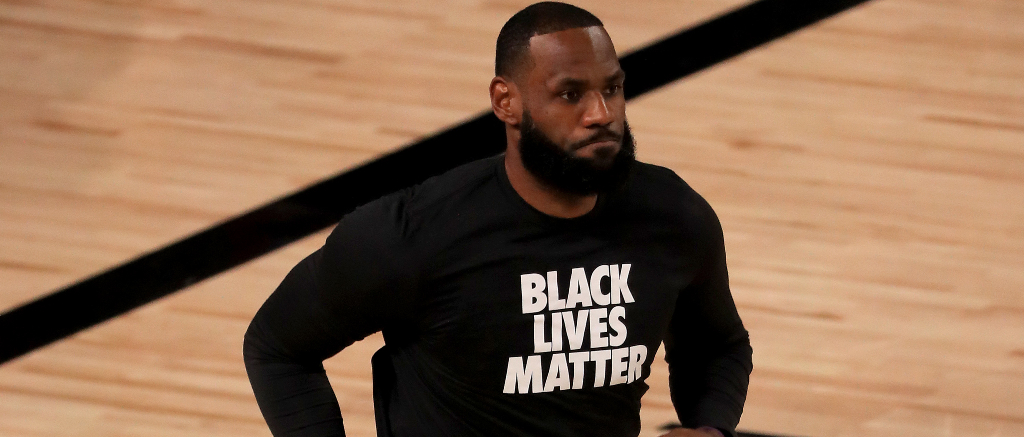

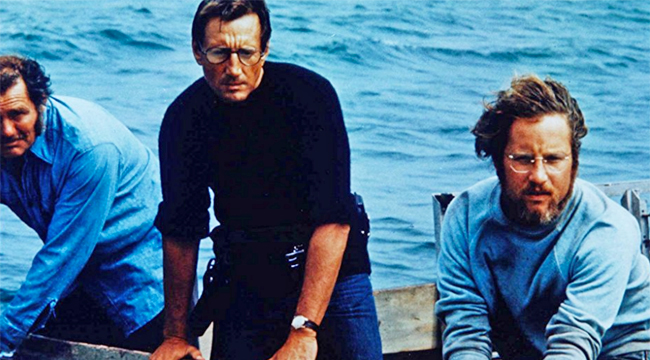


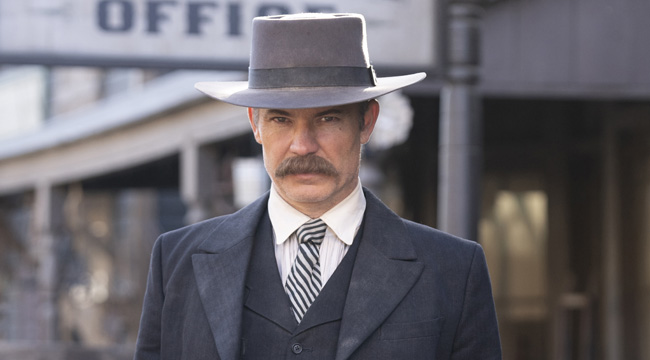
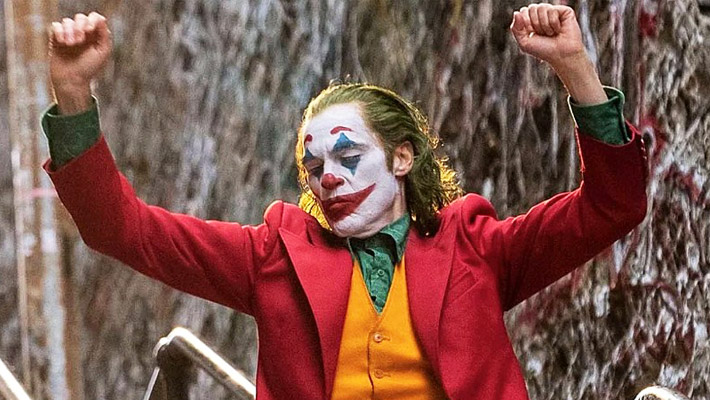
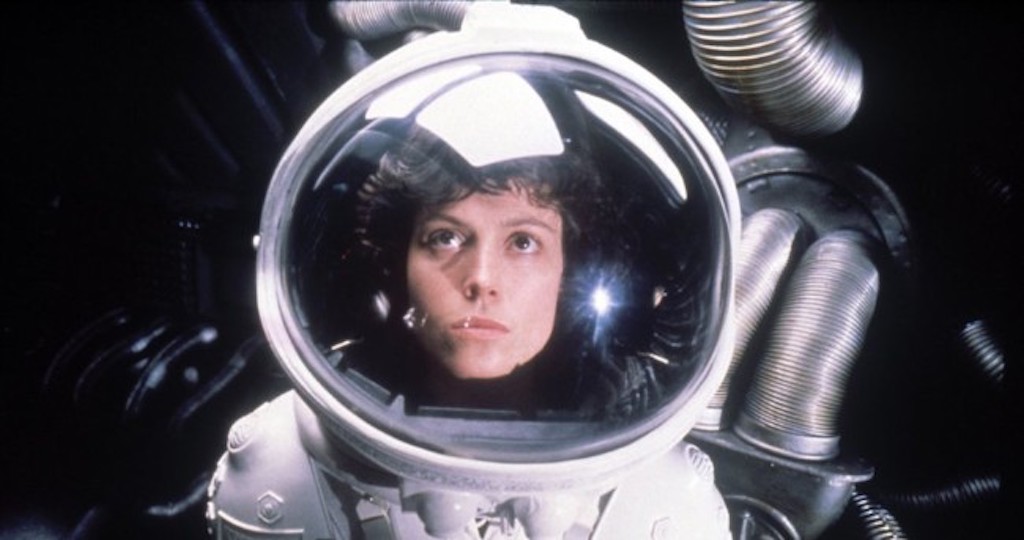
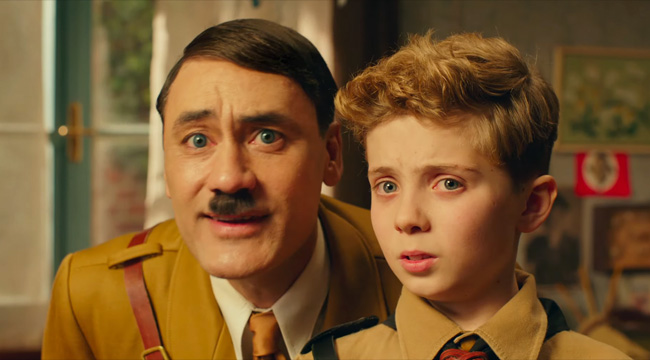

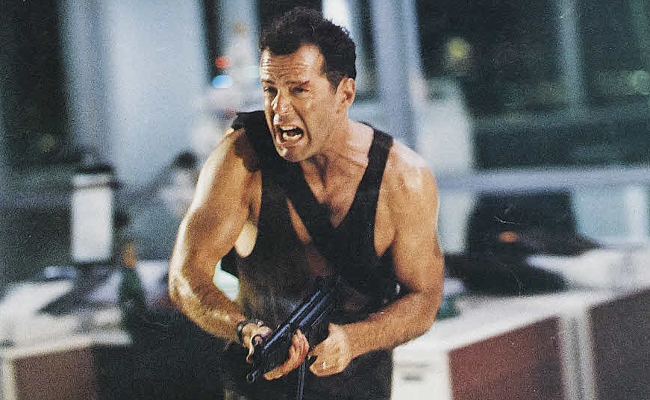
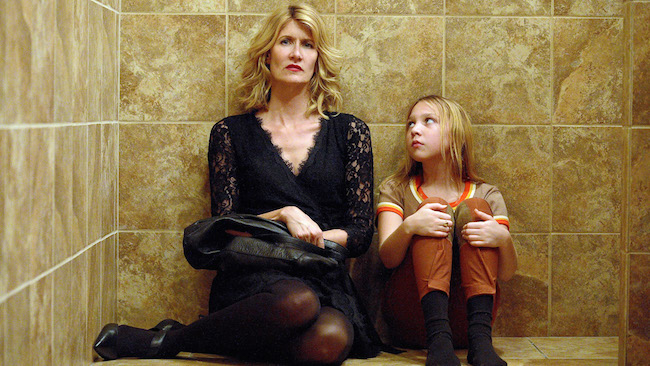
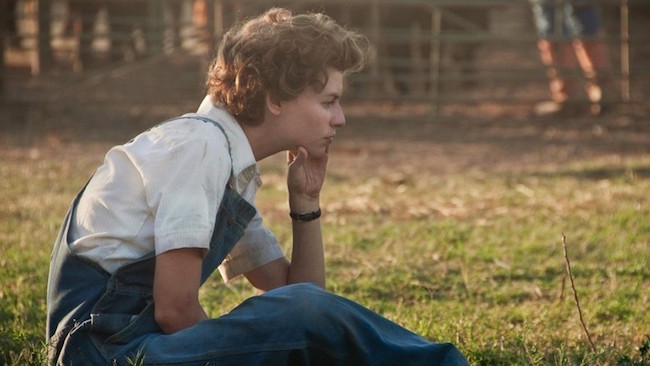
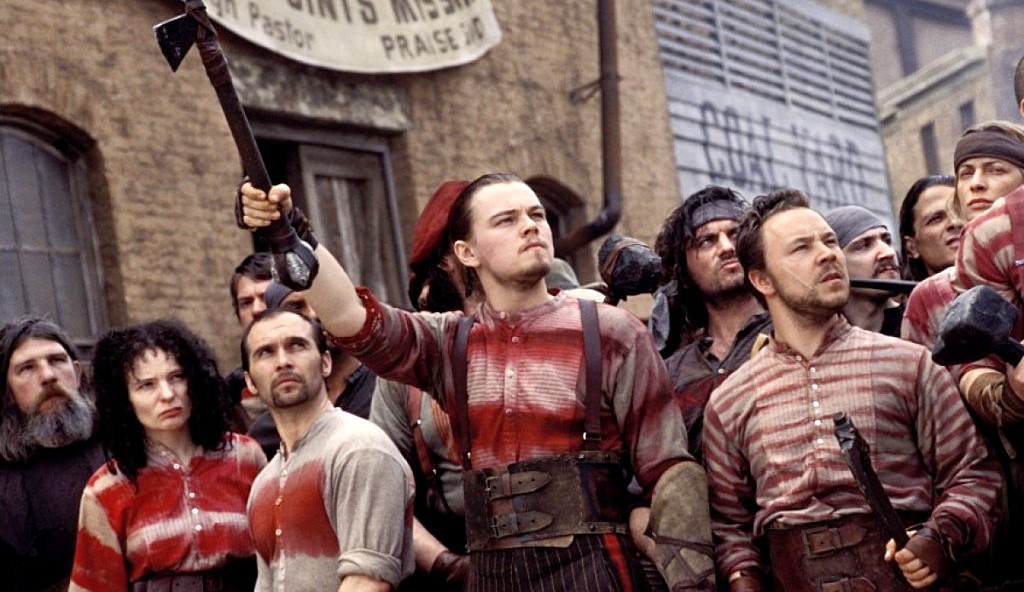
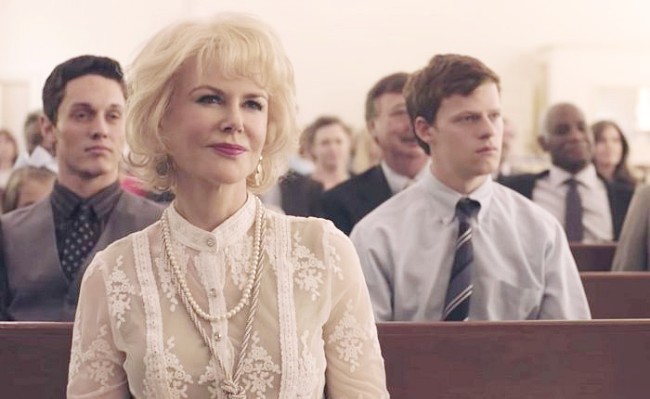
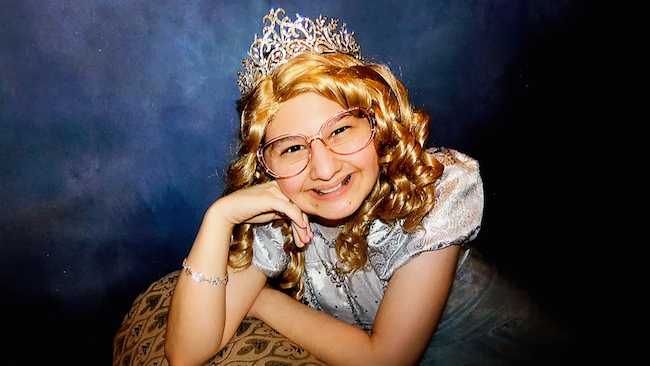

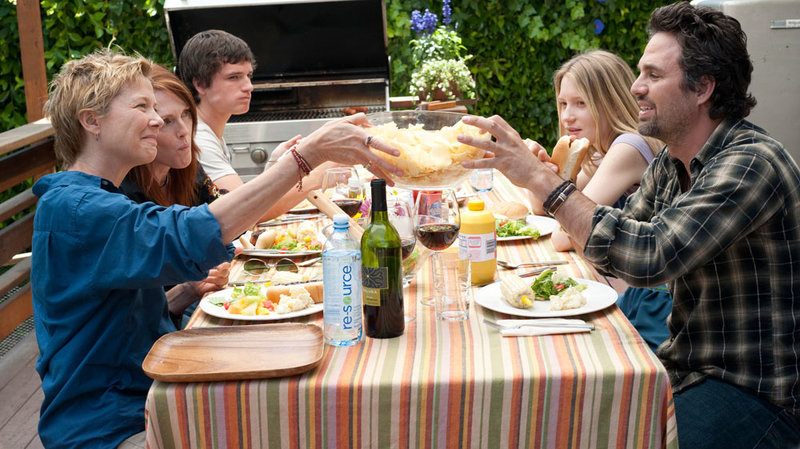
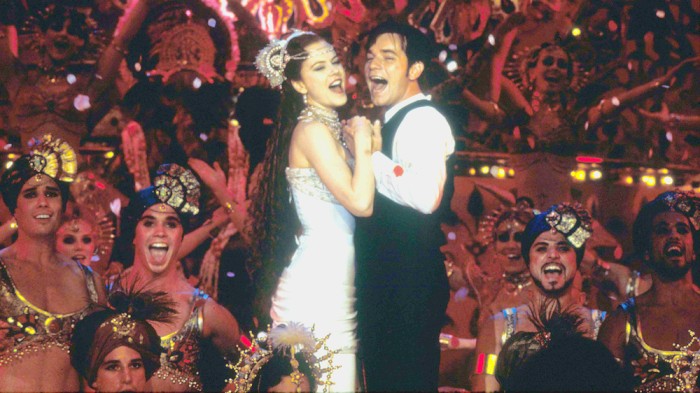
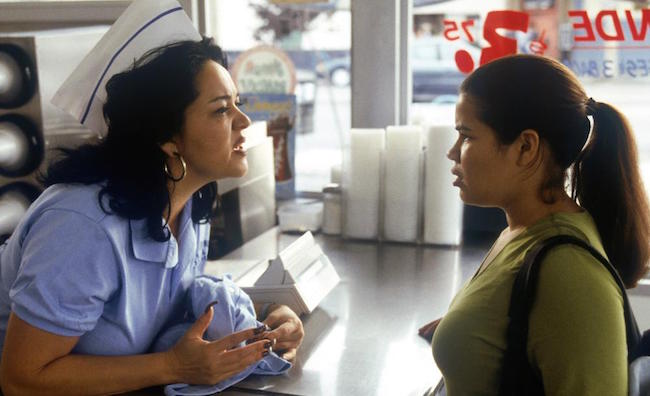
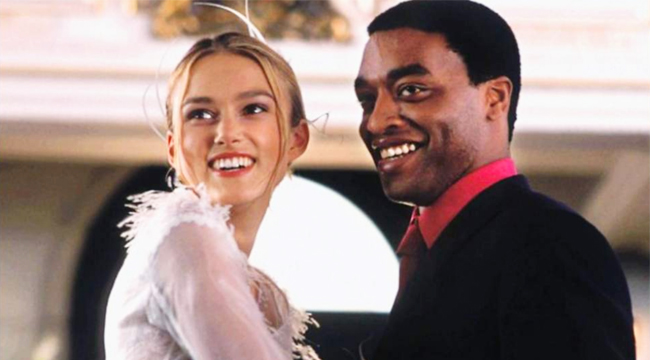
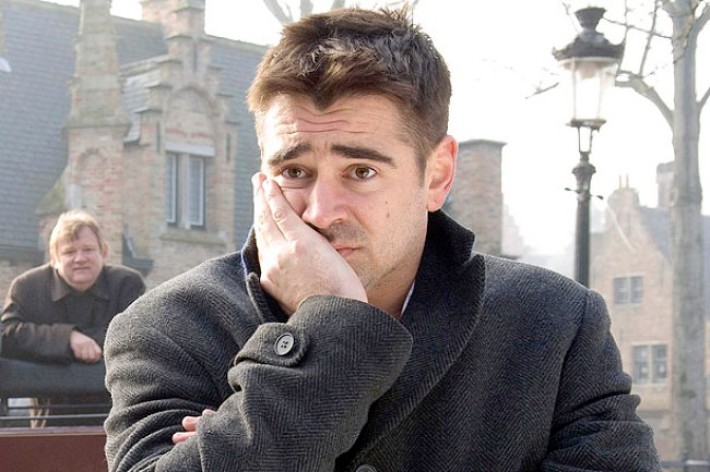
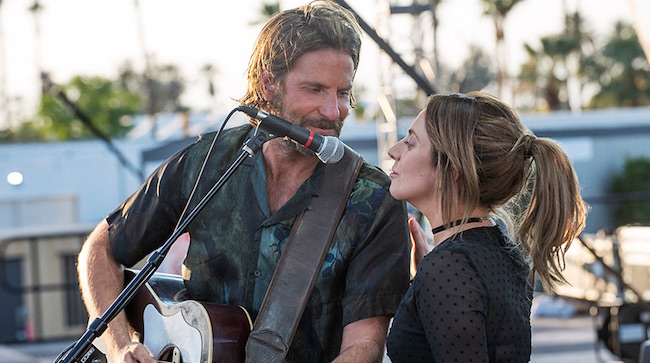

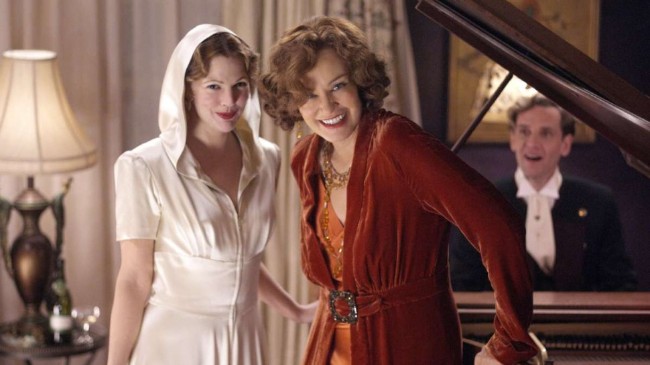
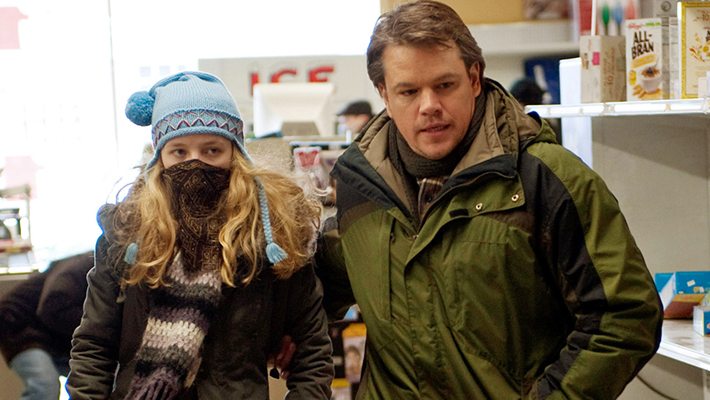
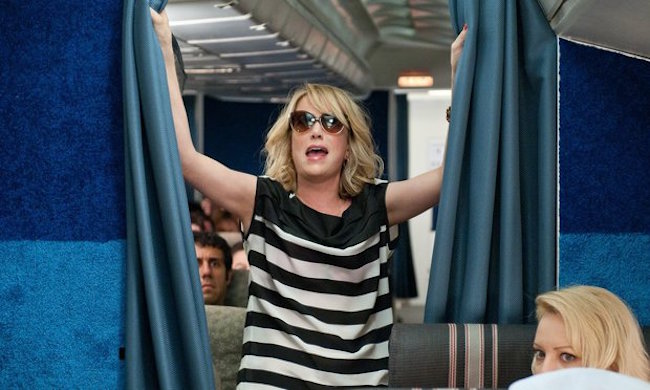
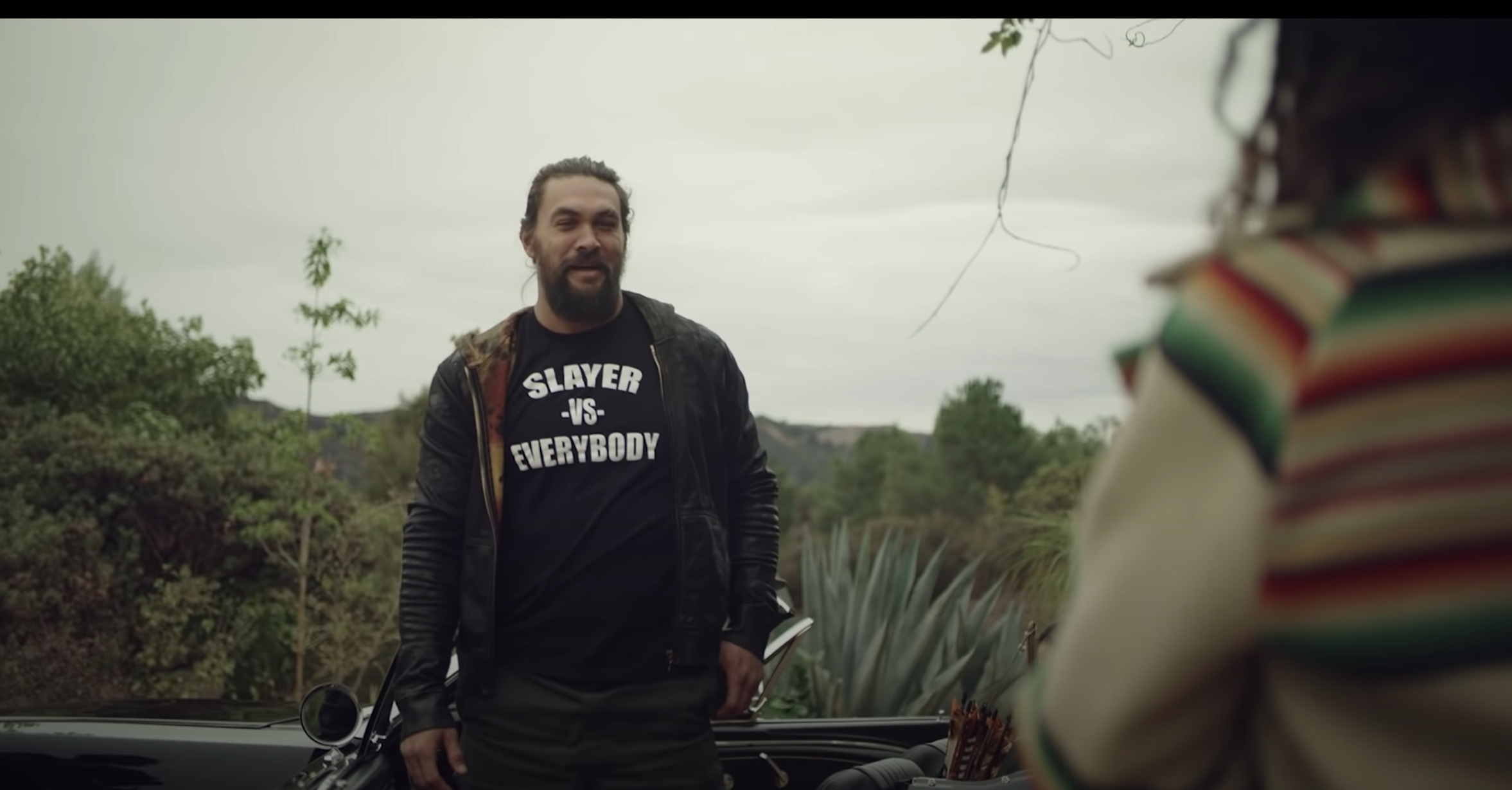
 : Mark Seliger
: Mark Seliger 